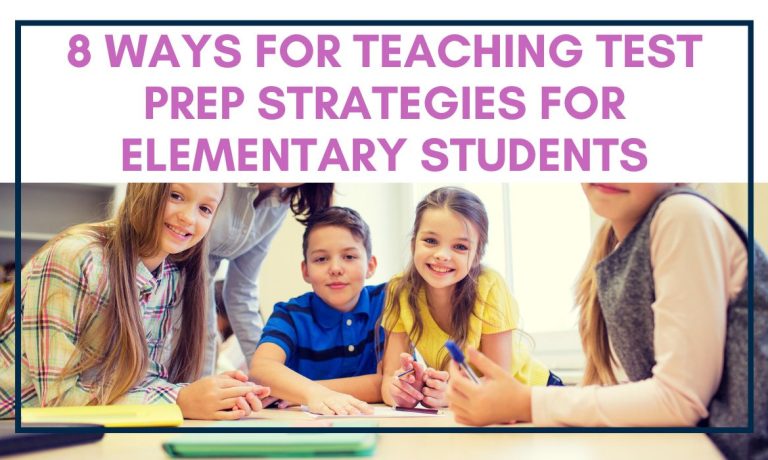Teaching test prep strategies for elementary students has become increasingly more crucial, especially during the springtime of the school year. Preparing our elementary aged students for the state assessments can be a daunting task. However, with the right strategies, it can be made simpler and more effective. In this blog post, I am outlining some of my favorite test prep strategies that teachers can implement to help their students succeed.
Create a Positive Learning Environment
A positive learning environment is essential for students to feel confident and motivated to learn, which is something we try to develop early on in the school year. Teachers can create this environment by establishing clear expectations, creating a routine that students can follow, and making learning fun and interactive. Additionally, teachers can help students set goals and celebrate their accomplishments, creating a positive feedback loop that encourages students to strive for success. Need some more ideas for creating a safe learning environment? Click here to read the blog post.
Teach Test-Taking Strategies
Test-taking strategies can help students approach tests with confidence and reduce anxiety. These strategies can include techniques such as skimming the test before answering questions, reading questions carefully, and checking work for errors. Teachers can model these strategies for students and provide opportunities for practice, so students feel comfortable using them during tests.
Use Practice Tests
Practice tests one of the best test prep strategies for elementary students because more often than not, they have never seen what an actual state assessment actually looks like. Teachers can create practice tests that mimic the format and content of the real tests, and students can work through them at their own pace. Additionally, teachers can use practice tests to identify areas where students need additional support, providing opportunities for targeted instruction.
Provide Feedback
Feedback is essential for students to understand their strengths and weaknesses and make improvements. Teachers can provide feedback through graded assignments, verbal feedback, or written feedback. Additionally, teachers can provide opportunities for self-reflection, allowing students to assess their own progress and identify areas where they need to improve.
Incorporate Technology
Incorporating technology can be one of the best test prep strategies for upper elementary students because it can make learning more engaging and interactive. Teachers can use technology tools such as educational games, videos, and interactive quizzes to help students practice and review test content. Additionally, teachers can use online resources to create personalized learning experiences for students, providing opportunities for differentiation and targeted instruction.
Provide Resources
When teaching test prep strategies for elementary students, we need to provide resources such as study guides, vocabulary lists, and graphic organizers can help students prepare for tests. Teachers can create these resources or use pre-made resources, such these I have in my TPT store. Additionally, teachers can encourage students to create their own resources, such as flashcards or study guides, to help them review and remember key concepts. Task cards are also a great resource to use for test prep. Click here to read my blog post about using task cards for test prep.
Encourage Collaboration
Collaboration can help students learn from one another and develop social skills and this can be one of the most powerful test prep strategies for elementary students. Teachers can encourage collaboration by creating opportunities for students to work together on test prep activities, such as group projects or peer reviews. Additionally, teachers can use technology tools such as discussion forums or collaborative documents to facilitate collaboration outside of the classroom.
Make Connections to Real Life
Making connections to real life can be one of the best test prep strategies for elementary students to help them understand the relevance and importance of test content. Teachers can use real-life examples or scenarios to help students understand how test content relates to their lives. Additionally, teachers can create opportunities for students to apply test content to real-world problems, providing opportunities for critical thinking and problem-solving.
